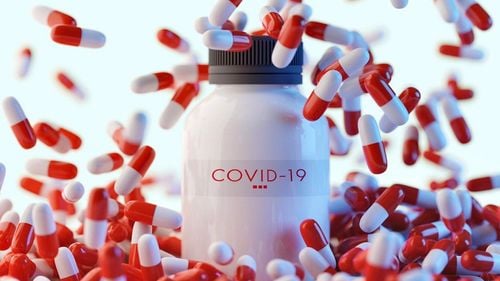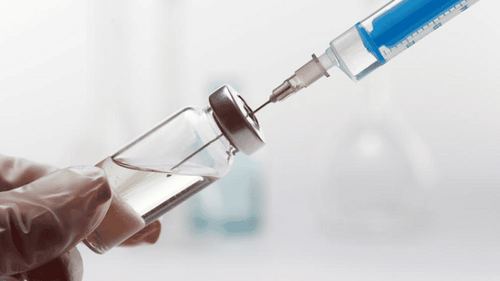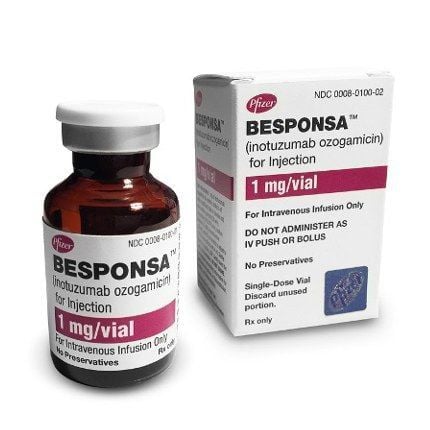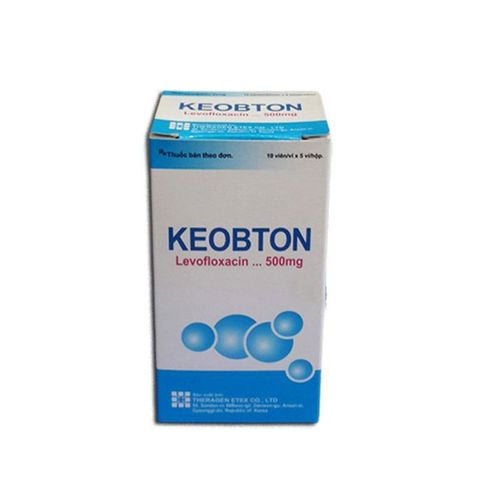This is an automatically translated article.
Anthim is mainly used for the treatment and prevention of respiratory anthrax. The drug is administered by intravenous infusion under the direct supervision of a physician. During the injection of Anthim, the patient should follow the dosing instructions recommended by the doctor or medical staff to prevent the risk of experiencing drug-related risks.
1. What disease does Anthim cure?
Anthim 100 mg/mL belongs to the pharmacological class of monoclonal antibodies, used together with antibiotics prescribed by doctors to treat inhalation anthrax. In addition, Anthim is also prescribed to prevent anthrax infection after contact with a carrier. Anthim is a product of Elusys Therapeutics, Inc., containing the active ingredient obiltoxaximab, which is available as a solution for intravenous infusion. Anthim should be used under the strict supervision of a specialist.
2. Indications and uses of Anthim
2.1. Indications for use of Anthim drug Anthim drug in solution form of 100 mg / mL is indicated for use in the following cases:
People with inhalation anthrax caused by Bacillus anthracis, combined taking Anthim with some drugs other suitable antibacterial drugs. Prophylaxis of respiratory anthrax caused by Bacillus anthracis when alternative therapies are not available or appropriate. 2.2. Uses of Anthim drug Based on the kinetics of absorption, distribution, metabolism and elimination of Anthim, doctors can choose the correct route of drug administration (intramuscular, oral or intravenous injection). circuit). In addition, drug dynamics and pharmacodynamics also help doctors determine the number of times for patients to take Anthim per day, the appropriate dose for each subject (evaluated by age, physiological/pathological state). ,...).
Pharmacodynamics of Anthim
The active ingredient obiltoxaximab in Anthim is a monoclonal antibody that binds to PA - the protective antigen of Bacillus anthracis. Active ingredients in the drug have the ability to inhibit the binding of PAs to their cellular receptors, and at the same time prevent the edema and lethal anthrax factors from entering the cell.
Anthim pharmacokinetics
Absorption: The active ingredient obiltoxaximab has linear pharmacokinetics over a dose range of 4 mg/kg – 16 mg/kg following a single intravenous injection into healthy subjects. At a single intravenous dose of 16 mg/kg for both men and women, obiltoxaximab achieved mean AUCinf and Cmax values of 5170 ± 1360 mcg/mL and 400 ± 91.2 mcg/mL, respectively. Distribution: Obiltoxaximab has a mean steady-state volume of distribution of 79.7 ± 19.2 ml/kg (greater than plasma volume). Tests showed that a certain amount of obiltoxaximab was distributed in tissues after intravenous administration. Metabolism: There are no specific scientific data on the metabolism of the active ingredient obitoxaximab in Anthim. However, the disposition of monoclonal antibodies is related to the extravascular space distribution for drug absorption into tissues, catabolism by proteases to amino acids and small peptides, and subsequent binding. compatible with endogenous group or can be excreted outside the body. Elimination: It is estimated that obiltoxaximab has a mean half-life of about 20 days, with a clearance value of 3.35 ± 0.932 ml/d/kg (much less than the glomerular filtration rate). Renal clearance of obiltoxaximab has not been observed.
3. Dosage and usage of Anthim
Anthim will be administered by a doctor or medical staff through a needle placed in the patient's vein. Medications such as Benadryl® or diphenhydramine may be given before obiltoxaximab injection to prevent possible allergic reactions to the injection. Patients need to follow the correct dose of Anthim according to the doctor's instructions or the manufacturer's instruction sheet, avoid arbitrarily calculating, injecting or changing the dose.
For the treatment and prevention of inhalation anthrax with Anthim, the recommended dosage is as follows:
Patients weighing ≤ 40 kg: Infusion of a single dose of obiltoxaximab with a concentration of obiltoxaximab. 24 mg/kg/dose. Patients weighing > 40 kg: A single infusion of obiltoxaximab with a concentration of 16 mg/kg/dose.
4. Some side effects when taking Anthim
When treating and preventing inhalation anthrax with Anthim injection, patients may experience some adverse events (ADRs). Some symptoms may disappear when the Anthim infusion is stopped, but there are also rare and serious life-threatening side effects that need to be addressed urgently. Patients should immediately notify their medical officer or doctor when they suspect Anthim side effects, including:
Headache, chest discomfort, palpitations or chest pain . Dizziness, fainting / loss of consciousness. Cough, difficulty swallowing, fast heartbeat, fast or irregular breathing. Fatigue or voice disturbance. Urticaria, itching, skin rash. Digestive problems such as vomiting and bloating. Abnormalities in lymphocyte counts, decreased white blood cells, and changes in neutrophil counts. Hypersensitivity reactions after injection of Anthim. Increased antibody (immunological response). Redness, pain, bruising, or discoloration at the injection site. Increased creatine phosphokinase, musculoskeletal pain, limb pain and myalgia. Upper respiratory tract infection, nasal congestion, itchy throat, sore throat, cyanosis, sinus congestion. Swelling (infusion related), fever. Anaphylaxis (rare < 1%).
5. What should be noted when using Anthim?
5.1. General warnings for infusion of Anthim Before and during the treatment and prevention of inhalation anthrax with Anthim injection, patients should take the following precautions:
Hypersensitivity reactions or shock may occur. anaphylaxis (cyanosis, rash, chest tightness, dizziness, shortness of breath, cough) when taking Anthim. Therefore, individuals with a history of allergy to obiltoxaximab or other active ingredients should not receive this infusion without the consent of their doctor. When signs or hypersensitivity reactions occur during and after the infusion of Anthim, the patient should be closely monitored to control and prevent worsening. If symptoms of anaphylaxis occur, the infusion should be discontinued immediately and the patient instituted appropriate treatment measures. Since the active substance obiltoxaximab is a mosaic monoclonal antibody, transplacental transmissibility is dependent on maternal serum concentrations, lgG subclass, gestational age and birth weight, which tends to increase as pregnancy progresses. . The lowest possible exposure occurs during fetal organogenesis. According to research, respiratory anthrax infection in the mother when left untreated can lead to death for both the mother and the fetus, as well as the newborn. Therefore, Anthim should be avoided in pregnant women. It is not known whether obiltoxaximab passes into breast milk. According to the doctor's recommendation, the treatment with Anthim for nursing mothers should consider the risks of the drug in contact with the newborn, and evaluate the benefit of the drug for both the baby and the mother. mom. Although Anthim may be considered during lactation, it should be used only when clinically necessary. The active ingredient obiltoxaximab can cause side effects after infusion, such as fatigue, dizziness, headache, and vomiting, so it may affect your ability to use machines and vehicles. patient. 5.2. Interactions of Anthim with other drugs Patients should keep in mind that the interaction of Anthim with other drugs is often quite complicated due to the influence of many components in the drug. Interactions may decrease the effectiveness or increase side effects of Anthim. Here are some drugs that may interact with Anthim:
Diethylstilbestrol when taken with Anthim increases the thrombogenic activity of Obiltoxaximab. Conjugated estrogens administered in combination with Anthim increase the thrombogenic activity of Obiltoxaximab. Chlorotrianisene may increase the activity of the active ingredient in Anthim when taken at the same time. Other drugs that cause drug interactions include estrone sulfate, estriol, dienestrol, estrone, dienestrol or ethinylestradiol. Consider using Anthim with food, drink, stimulants, woolen products, ... because these agents can affect the effect of the drug. 5.3. How should Anthim be stored? Patients should carefully read the instructions on the storage information of Anthim medicine listed on the packaging or follow the instructions of a specialist. Before using the medicine, check the expiry date carefully, avoid using expired or changed color medicine. Anthim medicine should be stored at room temperature, away from high temperature or direct light exposure, because these agents can metabolize the ingredients in the drug.
In summary, Anthim is mainly used for the treatment and prevention of respiratory anthrax. The drug is administered by intravenous infusion under the direct supervision of a physician.
Follow Vinmec International General Hospital website to get more health, nutrition and beauty information to protect the health of yourself and your loved ones in your family.
Please dial HOTLINE for more information or register for an appointment HERE. Download MyVinmec app to make appointments faster and to manage your bookings easily.
Reference source: drugs.com













